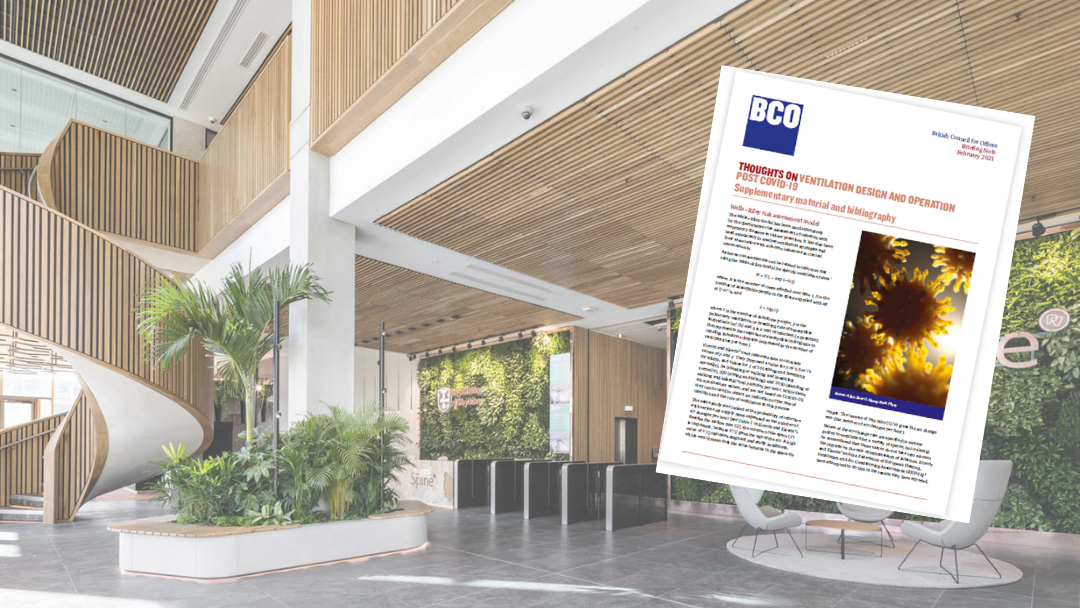A new British Council for Offices (BCO) research paper, Thoughts on ventilation design and operation post COVID-19, has called for UK offices to ensure they have adequate ventilation ahead of the return to the workplace.
Indoor air quality (IAQ) refers to the air quality within and around buildings with particular emphasis on how it relates to the health and comfort of occupants, and the BCO research paper highlights that while most offices that follow good practice guidelines do benefit from good ventilation, there are also many examples of poorly ventilated offices that fall short of the best practice guidelines set out in the BCO’s 2019 Guide to Specification. Poorly ventilated indoor spaces have been linked to COVID-19 super spreader events and the paper states that ventilation in these offices must be “addressed urgently.”
Recent advice from the UK Government highlights the importance of good ventilation in fighting COVID-19, citing research which shows that being in a well ventilated space can reduce the risk of infection from airborne particles by more than 70%. What’s more, the benefits of a well ventilated space go beyond mitigating the pandemic, with research showing a clear link between good ventilation and improved health and wellbeing.
The paper recommends that:
• as a minimum, levels of outdoor air ventilation should be in line with the new BCO guidance;
• particular attention should be given to high occupation density spaces, such as conference suites, social hubs and meeting rooms to ensure they have an adequate outdoor air supply and exhaust air ventilation;
• avoid the use of air recirculation in central ventilation plants;
• provide facilities management professionals with training to help them to address indoor ventilation challenges effectively and to ensure systems are properly maintained and their performance onitored; and
• continuously monitor indoor air quality and maintain CO2 levels below 1,000 ppm.
The paper discusses the potential use of air-cleaning technology to remove viral particles from the air, but emphasises that they are not a substitute for ventilation and should not be used as a reason to reduce outdoor ventilation rates.
Keep reading to find out the long-term benefits of good office ventilation and key considerations for future design.


